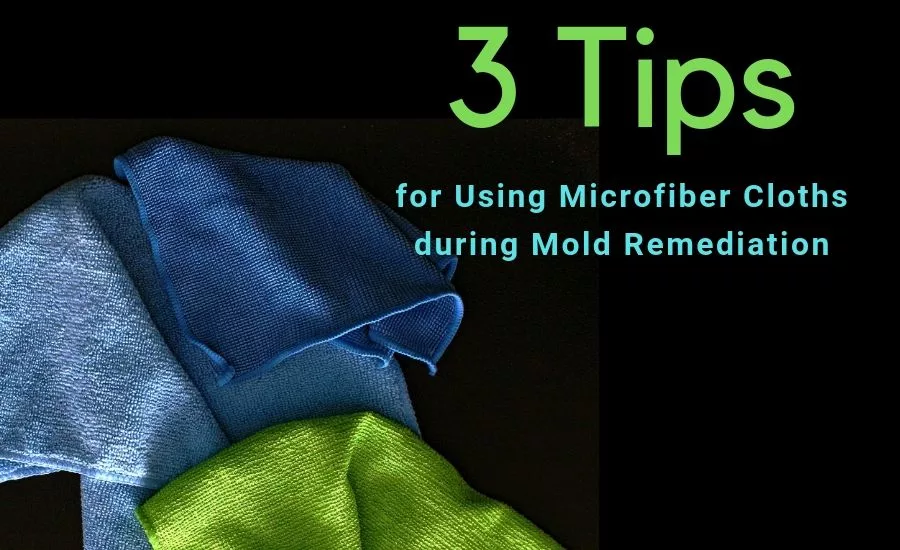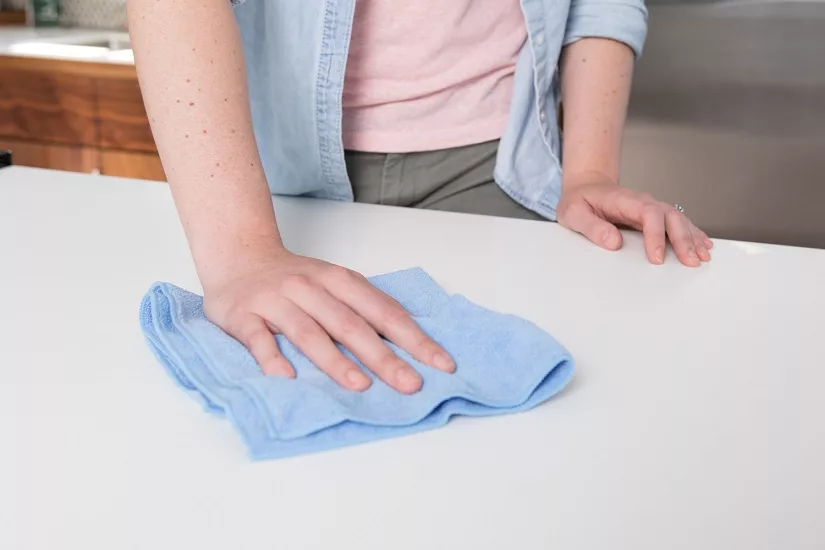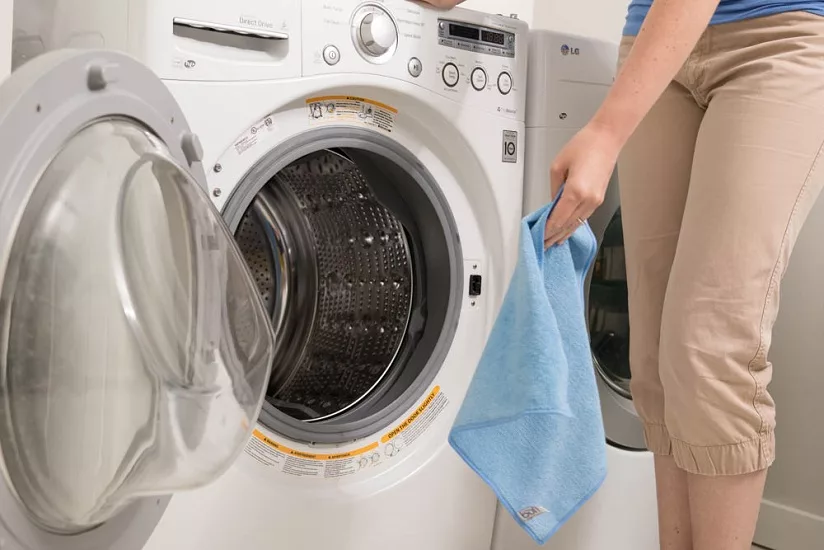3 Tips for Using Microfiber Cloths during Mold Remediation



If you haven’t included cleaning with microfiber as part of your mold remediation regimen, you’re missing out on a great method of removing mold particles. Microfiber cloths are not only ultra-absorbent, but their small fibers can help capture mold spores you might otherwise miss. Here’s more on how microfiber is a smart way to finish up mold restoration.
Use Microfiber Cloths to Remove Mold Particles from Surfaces
Removal of mold involves the use of air filtration devices, which minimize the spread of airborne contamination, and fogging, which helps to better control particles. Fogging adds small droplets of liquid to the air to force mold particles to cling together, further preventing them from spreading. Though these methods do a thorough job of removing particles from the air, they can still leave behind particles on surfaces that even HEPA vacuums might miss.
Microfiber, on the other hand, does an exceptional job at removing particles from surfaces. Microfiber cloths have small fibers that lock in any and all dust, dirt, and spores. These fibers tend to be much smaller in size compared to fibers in standard cleaning cloths, such as cotton making them ideal for capturing the smallest of particles.
To put microfiber’s incredibly small size into perspective, it is at least 1/100th the diameter of a human hair. Microfiber must be smaller than 1 denier (a unit of measurement that expresses fiber thickness), and high-quality microfiber used for cleaning is often 0.5 denier or smaller, some even as low as 0.1! Mold spores are measured in micrometers (microns), 10 Micrometers (Microns) is equal to 1 Denier. Mold spores on average range anywhere from 3-100 Microns, meaning that a high-quality microfiber (5 microns or less), is effective at picking them up.
But it’s not just microfiber’s small size that makes it great for use in mold restoration. Microfiber is positively charged, while dirt is negatively charged. This means that microfiber is effective at picking up and removing dirt, and any mold spores that dirt may contain. Microfiber can hold up to 7 times its weight in water, making it great for drying, thus preventing mold spores from growing and spreading. For an even better understanding on the science of microfiber check out this post explaining what is microfiber and how it works.
Choosing Microfiber Cloths For Mold Restoration
Not all microfiber cloths are the same. There are a variety of different weaves, types, and thicknesses that make each cloth great for different uses. Below we’ll go over what type of microfiber cloths are the best to use for mold restoration.
Reusable Microfiber Cloths
Use a high quality microfiber cleaning cloth made for professional cleaners. Don’t use retail brand products, because many times they aren’t good quality. High quality cloths will cling to dust and dirt, absorb water instead of pushing it around, and are thicker and denser. Below are some basic things to look for when using microfiber cloths for mold restoration. To make sure your microfiber cloths are high quality, test them out by following this guide.
- Use Terry Type Microfiber Cloths. Terry cloths are the most popular type of microfiber and are identified by its plush feel.
- Make sure your cloths are at least 250 GSM (Grams Per Square Meter). Anything lower than that will not be thick enough to effectively clean.
- Don’t use microfiber cloths that say 100% Polyester. Microfiber cloths need to be a blend of polyester and polyamide. The most common types of blends are 70/30 and 80/20 type polyester to polyamide blends.
- Make sure your microfiber cloths are split. This means that each fiber has an asterisk like shape at the end of each fiber. Microfiber cloths that are split have much more surface area to pick up particles. Below is an example of a split microfiber.
Disposable Microfiber Cloths
For heavy-dust mold restoration, using disposable microfiber cloths are a great way to prevent cross contamination. Disposable microfiber cloths keep things simple on the job: just dispose of the cloths when done. You won’t have to worry about using or washing a dirty microfiber cloth and potentially spreading mold contamination. Just be careful when throwing them away—you don’t want to cross-contaminate the mold particles.
Disposable cloths may be the more economical choice. Higher quality microfiber cloths must be laundered and cared for in a specific way. Because many are unaware of this, their more expensive cloths lose their effectiveness and must be replaced. Although, you’ll have to invest in purchasing disposable cloths more frequently, this can be better than continually replacing more expensive cloths. Make sure you are purchasing better quality disposable microfiber cloths. One thing to look for is if they can be rewashed and reused. And as always, the higher GSM, the better it will clean and dry. These are a good example of a high quality disposable microfiber cloth.
We think it is best to have both disposable and reusable microfiber cloths handy when dealing with mold restoration. We recommend using the disposable cloths for cleaning extremely heavy soils during mold restoration. This would be any task that visibly ruins your good microfiber cloths. Use your high-quality microfiber cloths for more general cleaning, drying, and dusting.
How to Wash Microfiber Cloths After Mold Remediation
If you’re cleaning with reusable microfiber cloths, make sure to wash them after use on a hot wash cycle. Don’t use fabric softener, as it can clog up the fibers and render the cloth unusable. To prevent your microfiber cloths from attracting lint, avoid washing them with cotton. It’s always safest to wash only microfiber all together. To extend the life of your microfiber cloths, allow them to air dry; otherwise, dry them in the dryer on low or no heat. Follow our washing and care instructions here.
Microfiber cloths are a welcome addition to the mold remediation process. Their intricate fibers and ability to absorb the tiniest of particles make them the ideal method of finishing up a mold restoration job. Following HEPA vacuuming and fogging, wipe and mop down surfaces with microfiber to thoroughly remove any remaining contamination.
Looking for a reprint of this article?
From high-res PDFs to custom plaques, order your copy today!





